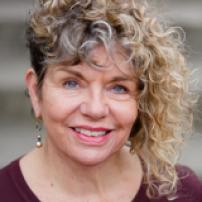
I love to support my Diamond Approach students in their process of self-discovery. In addition to being a Diamond Approach teacher, I have taught and coached business people in interpersonal communication for over 30 years. I was formerly a professional actor, including performing on Broadway and founding an unconventional theater that still exists in Vermont.
I have been married since 1998, and enjoy life with my creative and ever-evolving husband, and my friends. I particularly enjoy getting out in nature.
The Diamond Approach is my spiritual path as well as an everyday way of opening to the mystery of being alive.
How did you find the Diamond Approach?
A friend of mine was a teacher-in-training with The Diamond Approach, and he helped me arrange to have a series of private sessions with one of the other current teachers-in-training. That was 23 years ago! I have always loved learning, and I became captivated by this way that I could build continuous learning into my life, learning about the mystery of being alive and the nature of reality, in ways that help me feel more and more free of old patterns of conditioning.
When you first started, what was your greatest challenge?
The gentleness and subtle nature of the work made it challenging for me to fully recognize at the start how Diamond Approach sessions were affecting me. (Fast forward to recent years, when many family members and friends tell me that they see how The Diamond Approach has transformed me in various positive ways.) I had to make a leap of faith back then, to trust that even though I couldn’t completely understand, let alone explain, how this work was changing me, that it was GOOD, and that I wanted to further enter the mystery.
What has kept you engaged with the Diamond Approach teachings?
Once I joined a Diamond Approach large group, thus adding receiving teachings and exercises to the private sessions I was already doing with one teacher, I felt a sense of home-coming. The Diamond Approach teachings were, and still are, an exquisite blend of things I have somehow always known at some level, mixed with miraculous discoveries about the nature of what I truly am, and the nature of all reality. Another thing that has kept me engaged is how much I love and respect the radical questioning that is part of the Diamond Approach. This work isn’t based on dogma and there are no sacred cows. It delights me, when on a regular basis, our founding teacher Hameed Ali provocatively challenges and questions the very precepts that we’ve been holding dear. This path encourages utter open-mindedness.
What aspect of the teaching is most alive in you right now?
I see myself now in a phase of letting go of old, learned notions about needing to overly manage and organize my life. I keep getting astounded, over and over again, by how little it is necessary for me to “do,” if I can open to the dynamism of true nature streaming through me. I used the word radical above, and I appreciate that trusting true nature to manifest what is needed is a radical practice that runs counter to living solely through the ego, which was a valuable developmental phase of life that I now have the opportunity from which to depart, through the guidance of The Diamond Approach.
What’s your perspective of being a Diamond Approach teacher?
I consider it an honor and a wonderful adventure to guide other souls on the path of awakening to our true nature. I find that it’s important to help my students realize that true self-discovery happens right in the moment. The Diamond Approach is experiential – it’s based on the immediacy of living in the present moment. In our sessions we will experiment with ways to draw on the resources of the heart and the body, making a shift from how conventional existence relies so heavily on the ideas of the mind. Yet understanding is also key, and understanding our limiting patterns allows them to dissolve. The Diamond Approach taps into our natural ability to unfold the mystery of who and what we are. This leads to realizing more complete human potential in everyday life. Typical side-effects are more joy and more of a sense of freedom.

